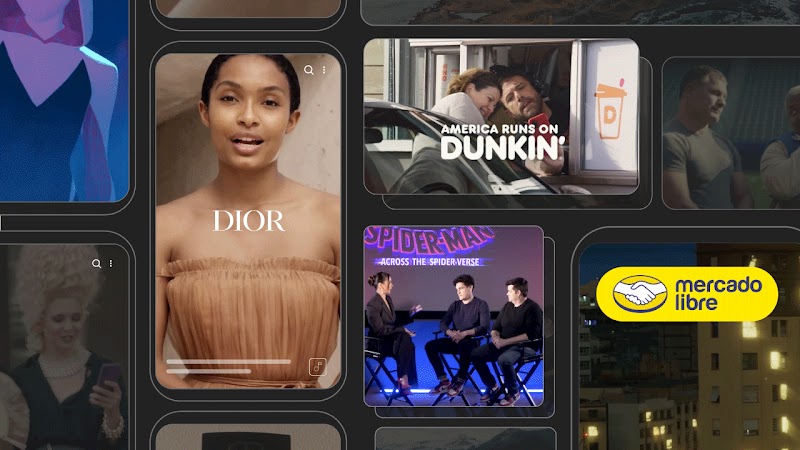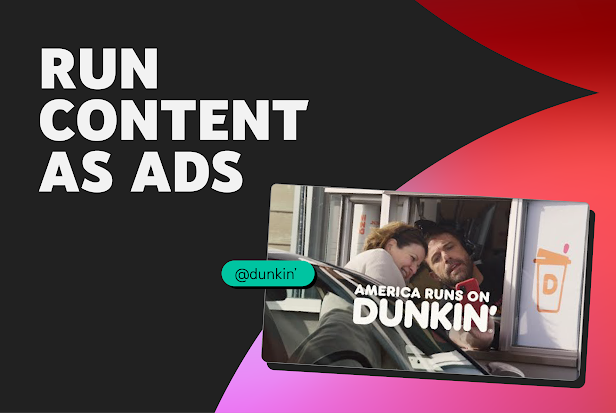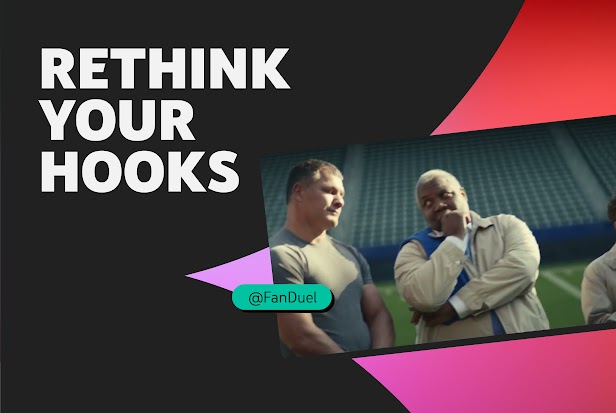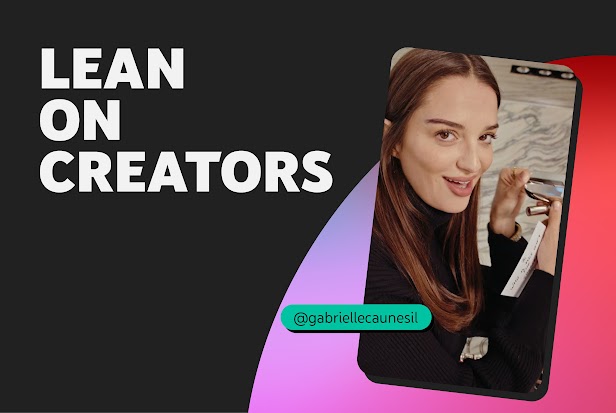
When you think of a luxury brand like Dior, some images are more likely to come to mind than others. Paris, Fashion Week, and the New Look silhouette, for example. Less likely to come to mind? Makeup tutorials on YouTube.
And yet, taking a more intimate, accessible approach may make sense for brands seeking to connect with users on their terms. By matching the aesthetic and feel of a platform’s organic content, an ad has the potential to resonate more deeply. Marketers and media buyers might call this a form of “relevance.”
We talked to Google Media Lab’s Team Adrenaline and Google Creative Works about how they determine best practices from rounds of creative experimentation on a platform-by-platform basis. Here’s what they say marketers should know about how people respond to different ad types, and how to authentically connect when your brand appears next to something they love.

Relevance is key, regardless of scale
Conventional thinking about platforms is changing as marketers reconsider the logic of traditional media channels. From a holistic outlook, anything can be advertising as long as it includes an interaction with a brand. Effective media strategies account for all the ways people experience advertising in its totality, from walking past a store to watching a sponsored video.
With user behavior changing, we realized that to break through on any platform, being relevant is key.
“We used to think of social media platforms through a reach and frequency lens,” said Suzana Apelbaum, global group marketing specialist for creative and innovation at Media Lab. “For example, we approached mass platforms like YouTube mostly as reach platforms, and only for what we called ‘relevance platforms’ did we consistently do bespoke work to engage key audiences. With user behavior changing, we realized that to break through on any platform, being relevant is key — regardless of the platform’s scale. So we moved from a ‘reach plus frequency’ approach to ‘reach plus relevance plus frequency.’”
Apelbaum’s team then swapped their social media briefing for a series of briefings: one for each platform, “taking into consideration the unique best practices, platform features, and user behaviors on each of them.”
Adapt ads to safe zones

Because YouTube is accessible wherever the user is, it should be watchable on any screen. That means accounting for specs and safe zones. Similarly, different ad lengths are suited to different marketing objectives, and production quality can lean more lo-fi in snackable, scrollable YouTube Shorts.
Building for more platforms also meant planning for a larger creative lift, said Andrew Wong, senior integrated media manager at Media Lab. “Where we used to be able to create a few 60-, 30-, or 15-second video spots, we have to create tons of short-form video, GIFs, and statics — multiplied by the number of platforms we choose to run on, and at greater frequency,” he said. “What this means is that we also need a fundamental organizational and mindset shift when moving to the modern marketing mix.”
Just as important as context and storytelling considerations are technical considerations, like screen size and platform UI. With more YouTube views now happening on mobile rather than desktop, creative teams should always review vertical video specs and build for smaller screens. Finally, marketers can get a clear picture of how their ads are performing with real-time reporting and Brand Lift surveys, whose results can inform future campaigns.

Every brand has what it needs to experiment
Given the emphasis on relevance, it may be tempting for teams to add local influencers to all their campaigns. But results from a recent run of Global Creative Works video experiments might mean that isn’t the only effective strategy. Rather, the team found that across a sample of ad creative representing three categories, ads tailored to their place in the funnel may have helped achieve certain objectives.
“From these initial experiments, we’re seeing that influencers, in particular, may help drive online sales,” said Billy Corbyn, head of Global Creative Works. “It’s not so much that influencers might drive the brands so much as that they drive action. They drive [viewers] to actually do something versus just being made aware of a brand.”
No one-size-fits-all
One potential finding of the creative experiments was that no ad type performed better than any other across all marketing objectives — yet emphasizing certain elements of an ad in the service of specific objectives could help move the needle.
In Mercado Libre’s experiment, the comedic brand ad (left) drove awareness and sales; the celebrity-focused recut (center), starring musical artist Paloma Mami, drove consideration and sales; and the influencer ad (right), created by dancer Cris Núñez, drove the highest sales.
According to this logic, different creative assets may work best for different parts of the funnel across a single campaign. For example, the Mercado Libre brand ad drove performance higher up the funnel when it came to awareness, while the brand’s celebrity-led ad boosted consideration and its influencer-led ad drove sales. The ABCDs of creative effectiveness offer more tactics designed to advance marketing goals.
“Using influencers, making your ad creative look like content, and making it more intrinsic to the platform — that actually makes people act,” said Corbyn, who also noted that testing across objectives is often as simple as verticalizing an asset.
Shorts don’t have to be short
Most people think of Shorts ads as vertical videos that last less than 15 seconds, but many clock in at 30 seconds or longer. If people are interested, they’ll keep watching, giving brands even more reason to jump into the action right away. That holds, whether the ad is cut from existing creative or produced specifically for Shorts.
Sony Pictures ran a 15-second trailer cutdown for Spider-Man: Across the Spiderverse (left) and an interview cutdown (right) featuring talent from the film, among other variations.
The team was surprised to find that longer Shorts performed just as well — and sometimes, better — than Shorts under 15 seconds. Case in point: Sony Pictures’ 49-second interview cutdown. Both the interview clip and the 30-second trailer drove metrics across the funnel.
Taking cues from creators
Can a brand ambassador drive metrics by talking directly to audiences? Dior’s video experiment suggests they can: Ad recall and search lift benefited from the approach, which took inspiration from YouTube’s organic content in which the fourth wall is more often absent than broken.
Dior took a traditional ad spot (left), featuring actor Yara Shahidi, and tested it alongside a vertical, direct-to-camera ad.
While the Dior traditional ad starred Dior brand ambassadors, award-winning actors Yara Shahidi and Anya Taylor-Joy, only the direct-to-camera ad featured Shahidi talking to the camera as she would a friend — an approach that resonated with viewers. No new footage was required, as all of the Creative Works experiments leveraged existing assets that had only to be verticalized to run.
With just six weeks to run the experiments, having assets ready to go was essential. “What every brand has is an asset library, and they don’t realize they’ve got one,” Corbyn said. “Most campaigns have a brand ad, but you’ll also have editorial content or organic content. … You are sitting on a wealth of assets that you can activate as ads.”

Creators make culture, not just content
What separates YouTube from other creator-driven platforms is its nearly two-decade history. Brands on the platform will find trusted creative ad partners with hard-earned, dedicated audiences.
Invest in creators
A Google Pixel 7a ad from Germany, featuring animator Plankton’s hand-drawn characters, part of a creator-led campaign.
To promote the Google Pixel 7a in May, one Google marketing team in Germany undertook an entirely creator-led campaign. The team hypothesized that, by embracing platform-first creative work designed to entertain, their ads could perform just as well as — if not better than — expensively produced traditional campaigns.
The campaign was a tough sell to stakeholders. Because it was the second-largest campaign of the year, measuring its impact was key, explained Mariya Kvitka, an associate product marketing manager at Google. After just two weeks, the team saw that the creator-led ads drove consideration and awareness KPIs faster than the traditional ads.
By the four-week mark, the team saw that the watch time of the skippable creator-led ads was 49% higher and consideration was 128% higher than the control, lowering their cost per lifted user by 56%. Playing the ads in a rotating sequence further optimized their media budget.
Those results may help brands use their investments in the platform to deliver even more value. Previously, one study had observed 57% more ad view time on YouTube compared with other digital platforms under similar testing conditions.1

“As a marketer, it can be hard to give up control of your ad creative,” said Kvitka. “Especially in the beginning, it took us a lot of courage to truly trust our creators. We had to learn to put aside our own preferences and rethink our traditional creative judgment. But we stuck to our mantra: Let the creators — the people who make YouTube what it is — do their magic.”
For the second part of the campaign, the team sought to add long-form content into the mix of short promotional videos. They asked eight different creators to produce content focused on the Google Pixel. With more time and the creative freedom to explore, the creators iterated on messaging in ways that resonated with viewers inclined to appreciate it.
Recap: How to build for relevance

Until recently, measuring whether sponsored content on creators’ channels drove consideration was a unique challenge. With the BrandConnect tool, the team behind the Pixel campaign was able to measure the direct impact of creator content on awareness and consideration for the first time. Compared to non-creator, short ads, creator-led long-form ads yielded 5X the awareness and consideration lift.
From taking advantage of a platform’s flexibility to connecting authentically with its users, these experiments demonstrate the potential for platform-optimized video marketing to prove both accessible and effective. Whether the component parts happen to be reused from an older YouTube campaign, shifted from another social platform, originally produced, or commissioned, the effort it takes to tailor them to their context is minimal compared to the reward.
“We’ve seen these amazing patterns emerge over time,” said Corbyn, referring to experimentation on YouTube. “But what do we know that will always be true? It’s that you need to experiment in order to know for yourself.”




